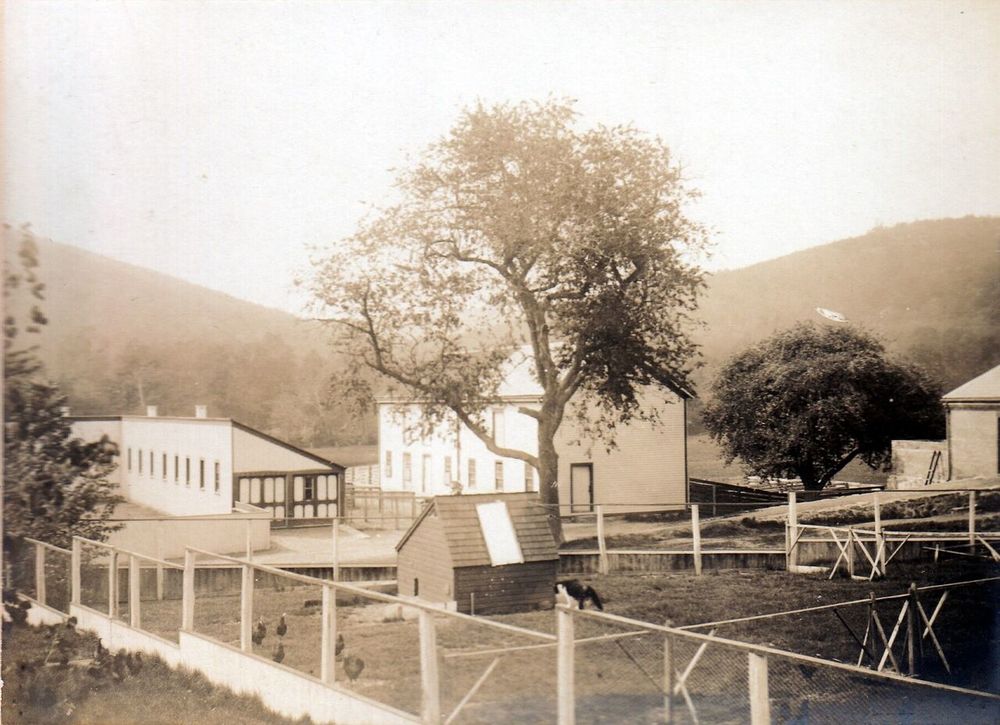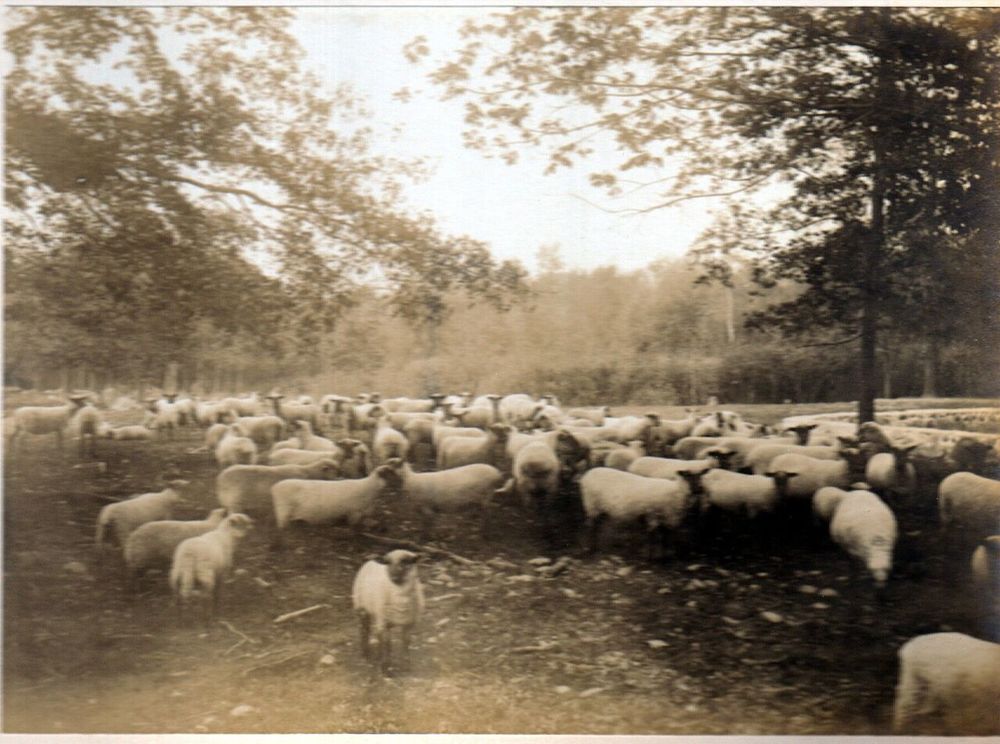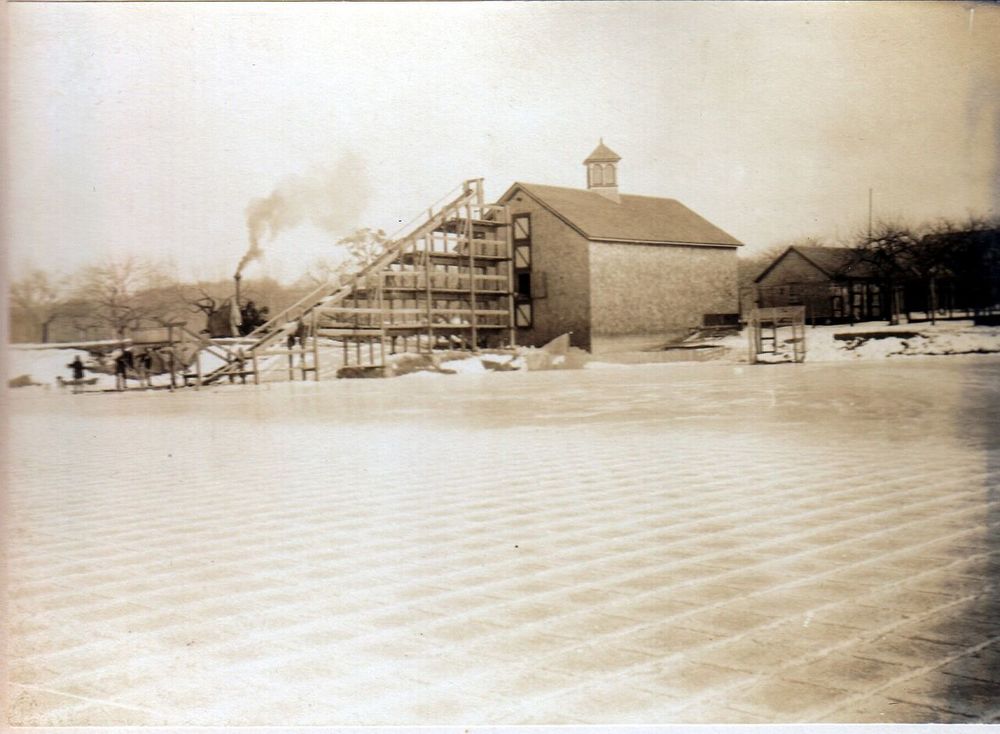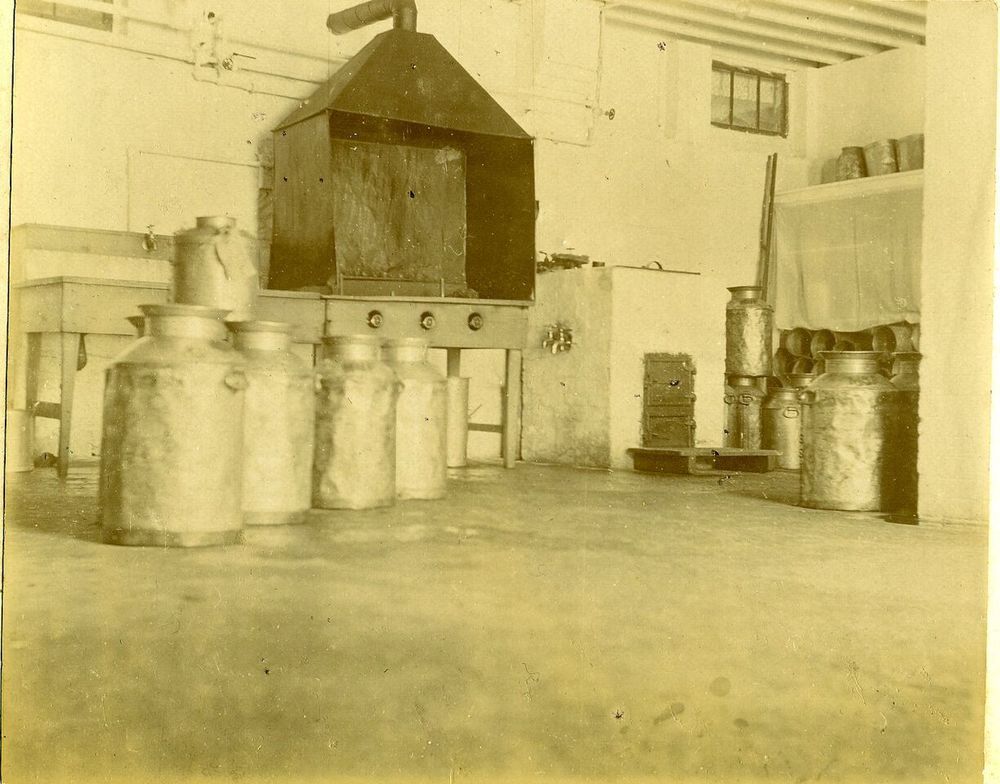An Advanced Operation
The Rest of the Farm
Mountainside farm was host to 260 stalls for its cattle, a silo that held 600 tons of feed, an engine room, a cooling room, and a dairy which was used for milk, cheese, and butter production. Clearly, the farm must have been a sight to behold. Also, the farm included a 60-horse stable, a separate bull barn, a carriage house, a piggery, a sheepfold, and a chicken house. In addition, there was an elaborate ice operation set up alongside the lake on the property, which included an ice house and a sort of pulley system which allowed workers to hoist ice from the lake directly into the building. Lastly, the extensive poultry fields, a sometimes-overlooked portion of Mountainside Farm, were an essential part of the farm, and can be seen here (see “Poultry Fields at Mountainside”).
More than Just Cattle
When taking into account the sheer variety and amount of the buildings and livestock at Mountainside Farm, it becomes obvious that Havemeyer’s cattle were merely the beginning. There was an elegantly designed poultry house, which in 1882 housed about one hundred chickens, which were raised for their meat and eggs. In the same year, it was reported that there were also about one hundred sheep and one hundred hogs, which were all kept in excellent health and were of the highest quality, according to the American Agricultural Association. Although Havemeyer admittedly focused mostly on his cattle herd, he also took great pride in his horses. Although they were expensive to breed and maintain, he increased the amount of horses at Mountainside Farm from ten to about forty between 1880 and 1882.
Agricultural Ingenuity
Theodore Havemeyer was certainly a king of industry, and his farm was a testament to his entrepreneurial spirit. It was said that he spared no expense in developing one of the most advanced farms of its time, implementing the latest technology and agricultural techniques at Mountainside. For instance, silos were a relatively new invention at the time, and Havemeyer decided to take a risk and install them at his farm without hesitation despite widespread uncertainty about the technology. This was a “bold measure,” as described by one journalist, but it ultimately paid off in that the cattle herd greatly benefited from it. He also experimented with different feeding methods, such as substituting a rye-based grain feed for corn fodder, a process which proved to be quite effective. In the long run, Havemeyer’s agricultural ingenuity made it so that his farm was one of the most recognized and advanced in the nation, with one reporter stating that the operation “could not be duplicated…(for) less than $300,000.”



